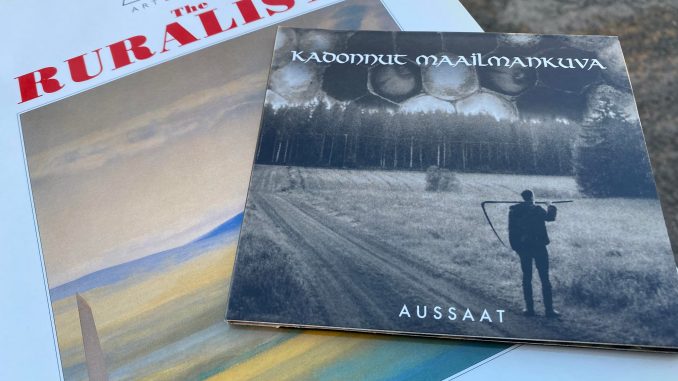
By: Mikko A.
For many years, I have returned to the idea, what would be the ruralist noise. Or the ruralist industrial. Is latter a paradox, or combination of ideas that make perfect sense as soon as they are articulated?
I recall talking about it way more than decade ago on old Troniks/Chondritic noise forum. Getting some fairly amused or even snarky responses. In very urban youthful manner, some would view non-city environment crowded by some sort of clueless rednecks, and certainly not audience for hard and challenging experimental sound. Consensus seemed to be at young age that one just got to get out of there, the place where nothing happens.
This may be common view among certain era of underground, that everything happened in busy urban environment. Anyone not being there, is missing something. Absolutely nothing exciting happening outside the cities. City culture has changed. Even without unusual times we have witnessed during couple recent years.
The older I get, the more underground people, and noise people I talk to, have either moved out of the cities, or found cities uninspiring. Many prefer to stay as often away as possible. Partially it is that city life turned boring or even disgusting. Partially, it is because city life seems most of all… dead! Especially in recent years due circumstances, but already long before that, a lot of things have moved online. Formerly vital meeting points and ways of organization has disappeared. Many times I do wonder, if there is any reason to me to go to Helsinki, capital of Finland except couple friends there. What is there, beyond couple large scale museum exhibitions? Most things classified alternative, obscure, and so on, is gone. No longer one needs to go there to find records, books and gigs.
Besides that, suddenly there would be nice live gigs or events happening elsewhere. Often enough to book your calendar full. Depending on underground genre, you would possibly get more interesting shows happen in rural areas, instead of metropolitan music venues. Even noise and industrial related shows are sometimes happening in sort of waste space between cities and countryside.
Several major names of Finnish hard electronics and fierce noise now live permanently in small towns, even in pure countryside. People like myself, who work in city, still goes for weeks in the woods as often as possible. There is barely lure in playing in music clubs of big cities. For some of these artists, this is directly connected to the sound they make.
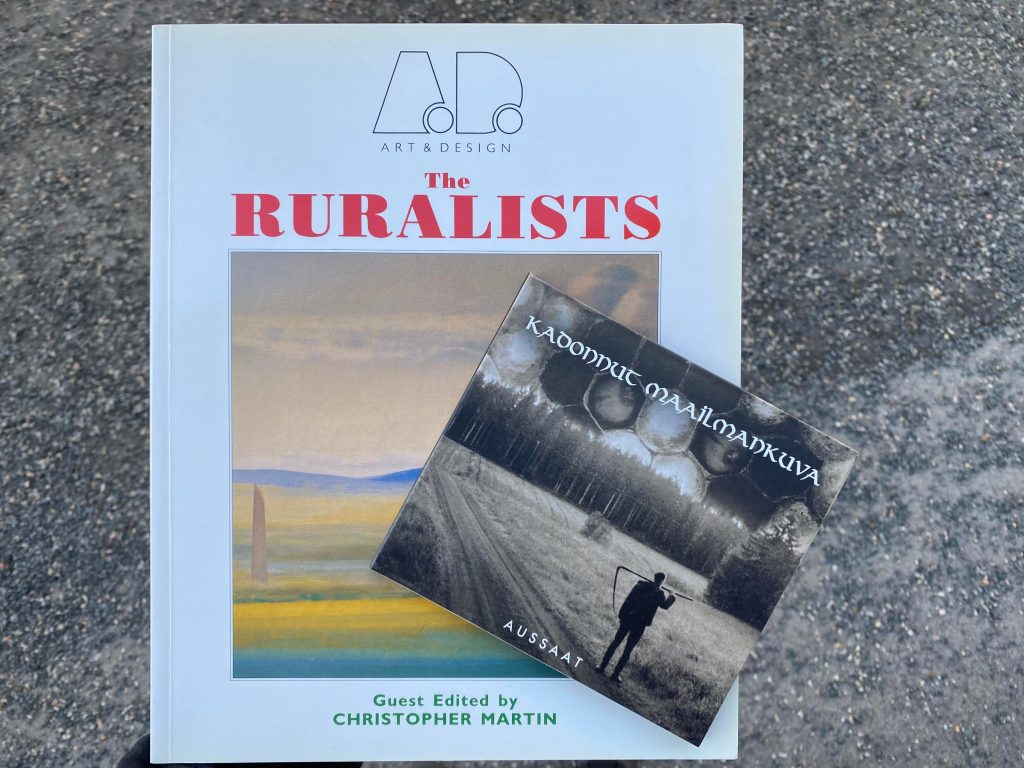
After 3 tape releases, Nuori Veri debut CD ”Kadonnut Maailmankuva” came out on Aussaat in turn of 2021/2022. If there is something you should call as ruralist industrial, this is probably best possible example.
If the old original industrial music was among other things, defined by the mechanical experimental sound as opposed to ”humane” music, there is certainly that element still present in Nuori Veri. Even if it stands in firm opposition to what industrial music may have become.
Nuori Veri has no synthesizers. It has very little and very mild usage of effects and processing. It is very much soundscape of luddite spirit. Not mass scale industrial sound, no hydraulics, no steam, no computers. It is still manufacturing of sound, rather than playing it. Sound that is not purely craftsmanship and historical sound, but kind of leftovers of the man made culture and objects, taken over by wildering nature and natural decay.
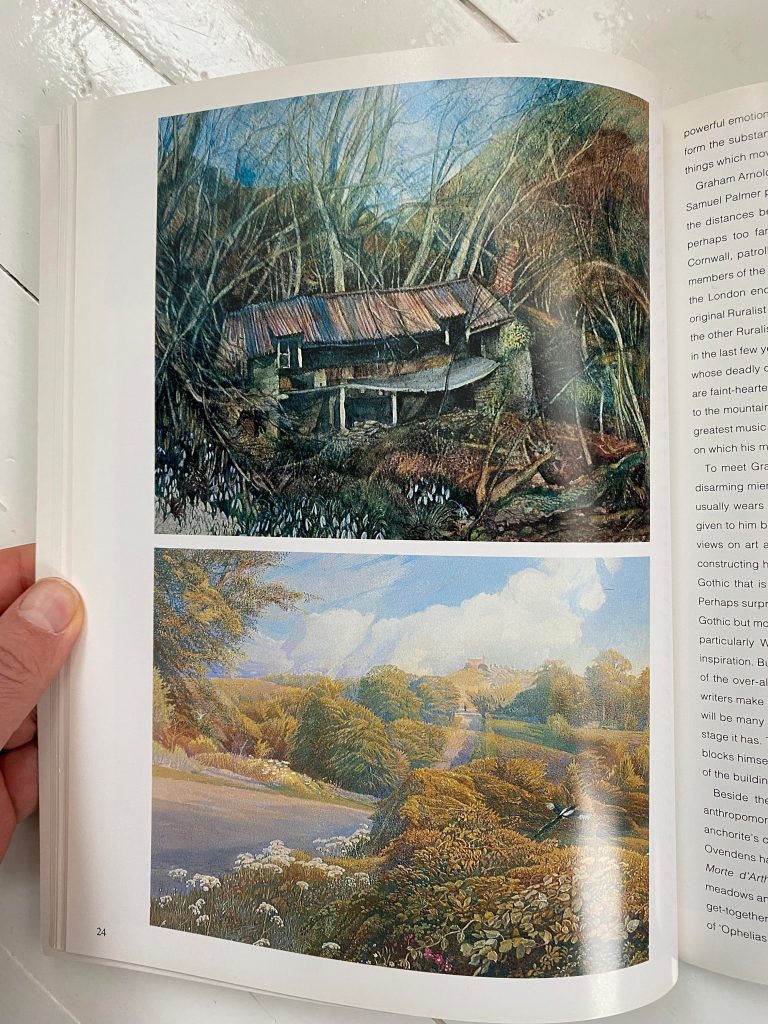
When I started to talk about concept of ruralist noise, it was sparked by art group called The Brotherhood of Ruralists. This group of English visual artists never really issued manifesto typical for avantgarde art, nor they had dogmatic visual or thematic guidelines. Formed in 1975, their work was mostly focusing on traditional skills, as opposed to modern conceptual art. They stood firmly in opposition of what art had become by mid 70’s. However, their work would not look so traditional in my eyes. It often had something quite unusual, and I would never consider these could be centuries old works.
For sure, the work is figurative as opposed to abstract and theoretical. Painting with classic methods, in oil and watercolor predominate. However, also mixed media assemblage, printmaking, ink and pencil drawing and so on. If one wished to extend what the art really is, also perhaps architecture, photography, or even curation of specific collections of others photography and poetry. I do have at least one older Ruralist book in my collection, A Book of Acrostics.
Times that sparked Ruralist to group up date so many decades back, I was not even born yet. I can just believe when Christopher Martin, who wrote edited The Ruralists book in 1991, describes in how it is now hard to imagine the contempt with which not only figurative painting but painting itself was held in the late 60’s and 70’s art world. Art was performance, numbers, concepts, documents, machines, photographs, maps, mud, piles of stone, piles of brick. Art was there to shock and show its political credentials, not to be beautiful, not to give pleasure, or reassurance.
Industrial noise, by easiest logic, and by historical facts, certainly falls into this avantgarde expression. It would hope to shatter the stagnant and dead idea of certain dated skill and virtues. However, one can always take a look, what artists really were ready to throw away and what it may have resulted. Just as we can observe what has happened with noise, if instead of juicy, powerful, sonic pleasure, one would merely get theoretical andmathematical expression, that will work only if explained in liner notes? Instead of purification and advancement, one may see typicality of naked emperor syndrome. It only requires one to ask what’s up with this bs, and appeal may be reduced to minimum.
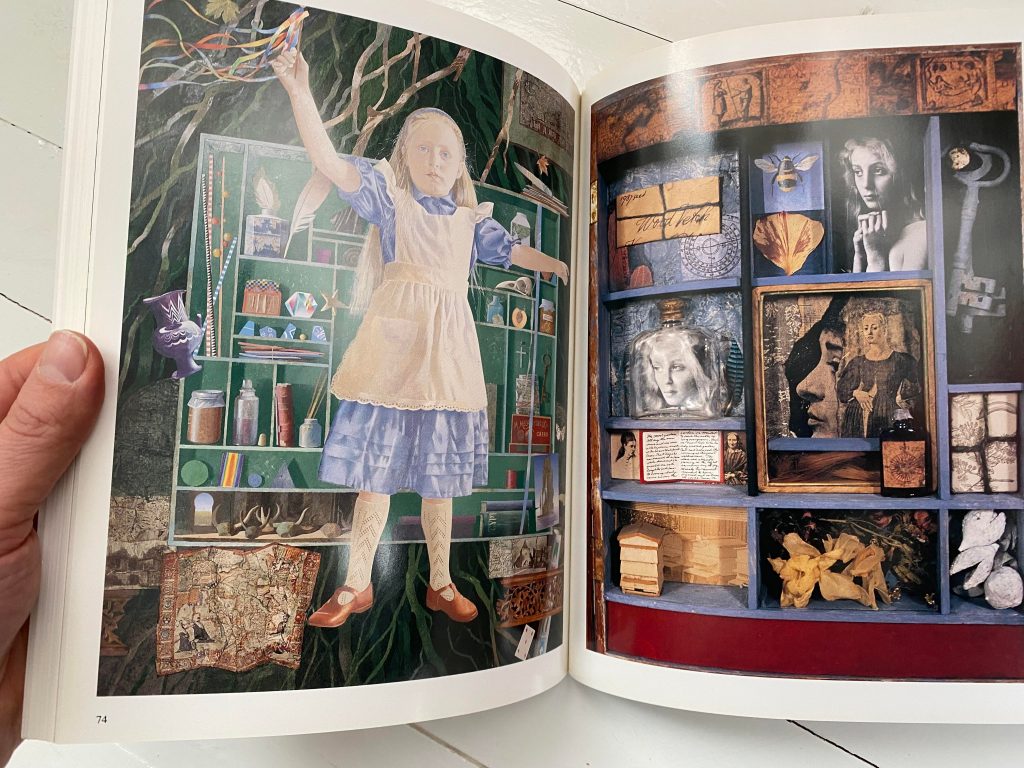
It is not difficult to imagine 60/70’s artworld, when looking what is currently promoted the most. Looking at the announcements of Helsinki museum exhibitions for early 2022, probably evokes similar feeling as Ruralists had back then. Or perhaps the last time big Helsinki art museum held exhibition of 80 young and upcoming artists (25 years old and less). I was blown away how uniformly cliche, and obvious most of it was. It was like document of what is absolutely most popular, and most common themes, and the most obvious creation styles. I was mainly thinking, how come this art is equivalent of lazy social media post? Is it problem of curation? Is it problem of coverage? Where are the other artists? Is there?
The Ruralists most vocal spokesman, Ovenden concluded that in English artworld, there was really like couple dozen crucial people in power. They would kind of set the climate and tone. He concluded that this group of people did more harm to art than anything else.
It is easy to understand, how there is decision to not want to belong to that. Even nowadays, conclude that I may create creations, but I do not belong, or wish to belong to the art world that exists in form of institutions.
I have heard simplest way of deciding, as art lover, are you traditional or modernist. It was amusingly blurted out in form of question: Do you prefer to watch endless technically flawless pictures of jesus, or… something else?
When you put the question like that, sure, one can understand that mere skill to paint may lose its charm quite soon to many people. Some will appreciate any display of craftsmanship, even if it would be void of point. It appeals to large masses, who may prefer also in music, to watch drum-cam videos, guitarists shredding technically advance patterns… but never really want to experience the actual creative art piece.
For many, that kind of technically flawless performances are obsolete.
Suddenly to create something wrong, paint deformed, crooked, brutally offensive pieces of shit would be superior to skill – that is used merely for endless replication of biblical themes.
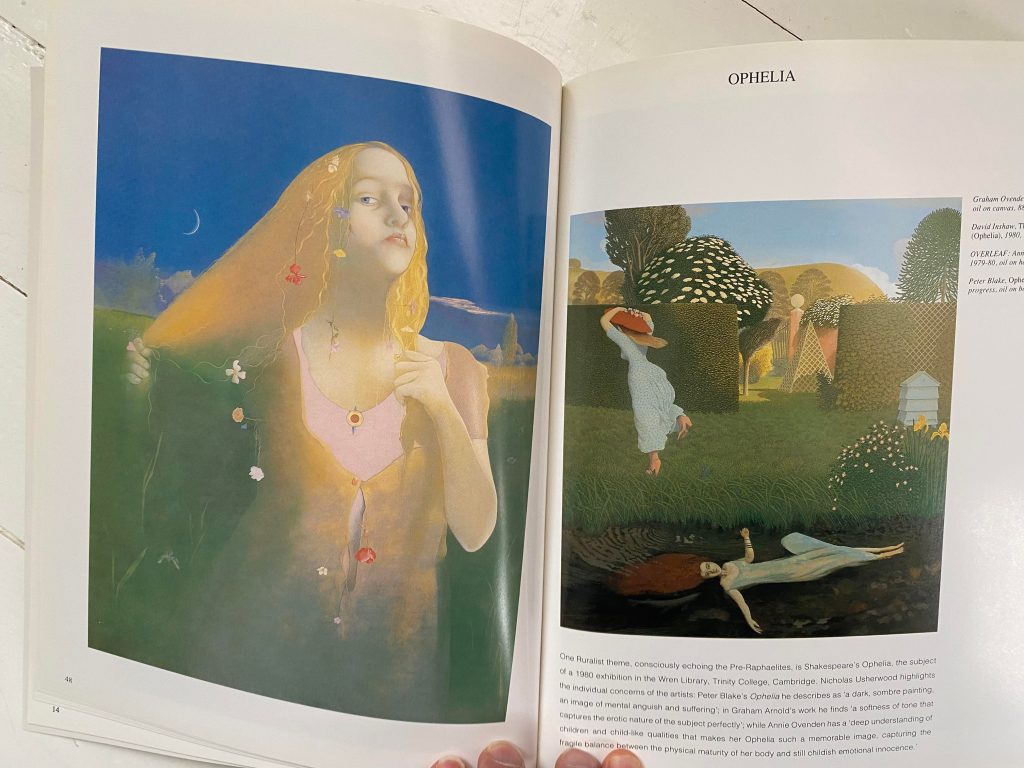
When The Ruralists were accused of not being progressive, but regressive, there was response that actually ruralist work explore also complex range of darker side of human existence.
This is one of the interesting points where I feel ruralist art and experimental industrial meets. It is also where projects like Nuori Veri shows different angle. It is also debatable is it different enough to be opposite?
Each Ruralist’s own techniques and work remained diverse. There is just common evocation of a mystical response to the observance of nature and rural life.
One dominant element in The Ruralist works is pastoral vibe. There are other things to be found too, which curious viewer may observe. One of most common is probably the pastoral atmosphere of English landscape. This is exactly the element they were criticized of. Their work was said to be nostalgic, sentimental, and being corrupted by cheesy visions of mainstream advertising. Not really reality.
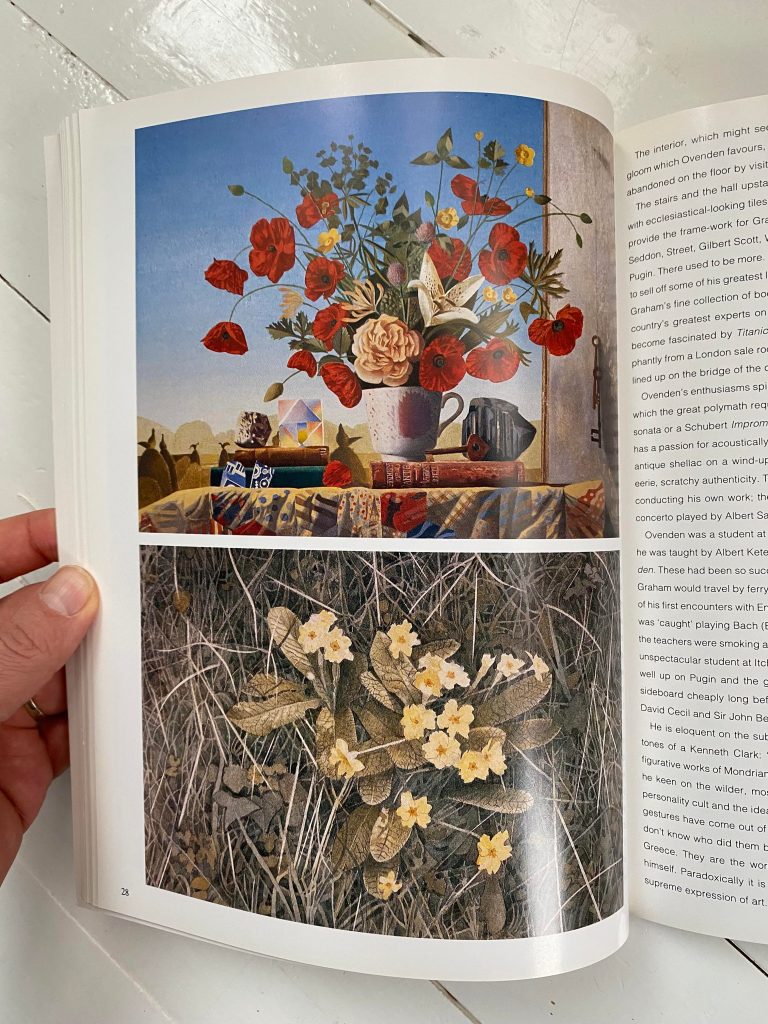
Sure. Pastoral art, with its idyllic rural romanticism designed to satisfy needs of urban audience, is one thing, but there is more to it. Ruralist work are not quite the level of ”capitalist realism” we see now. It has odd bizarre twist to it, which is both dark, but also charmingly challenging and certainly not obvious.
Especially when we return to Nuori Veri album, his depiction of rural sound or idea, is not idyllic postcard view. It is the view that may have the shadow of industrial culture. The environment found here, is often wasteland, ignored, deserted. Touch of human did not clean it up, but more like touch of nature swallowed what man had created or left there.
The sounds of album would resemble signals of broken radios, rusty discarded farm tools, random junk found from the barn, half functioning out of tune piano left on mercy of moisture and temperature changes. Animals. Slower pace. Mechanical – but not ”cyber”. When one can assume contemporary technology being heard on album, it may be phone signals disturbing old radio signal, like desperate attempt to find even 3G connection! Instead of being error, it seems figurative element, depicting the actual happening.
Like among The Ruralist there was attempt to find some sort of spiritual angle, there is strong spiritual angle in Nuori Veri.
Kadonnut Maailmankuva translates as The Lost Worldview. It has the path from disappointment, yearning, discovery and eventually some sort of fulfillment too.
We can hear narrations related to deep ecology. We can hear strong opposition to ”modern”, against dogmatic concepts that try to take over life itself. Eerie broken signals and acoustic noises are colliding while narration may describe reality of rural life. And you can be sure, it is not THAT paradise you see in romantic advertisements. It is mice shit on the floor, paint peeling off the farm walls, long car drives from the city, towards the desolate wasteland… Listening radio where news are talking about kid being stabbed. In a way, Nuori Veri stands in firm opposition of pathological morbid interests common in power electronics and vile noise. Focusing on something some kind of yearning that there should be more, and certainly acknowledging that the urban city life offers alienation and angst in way that no longer feel creative.
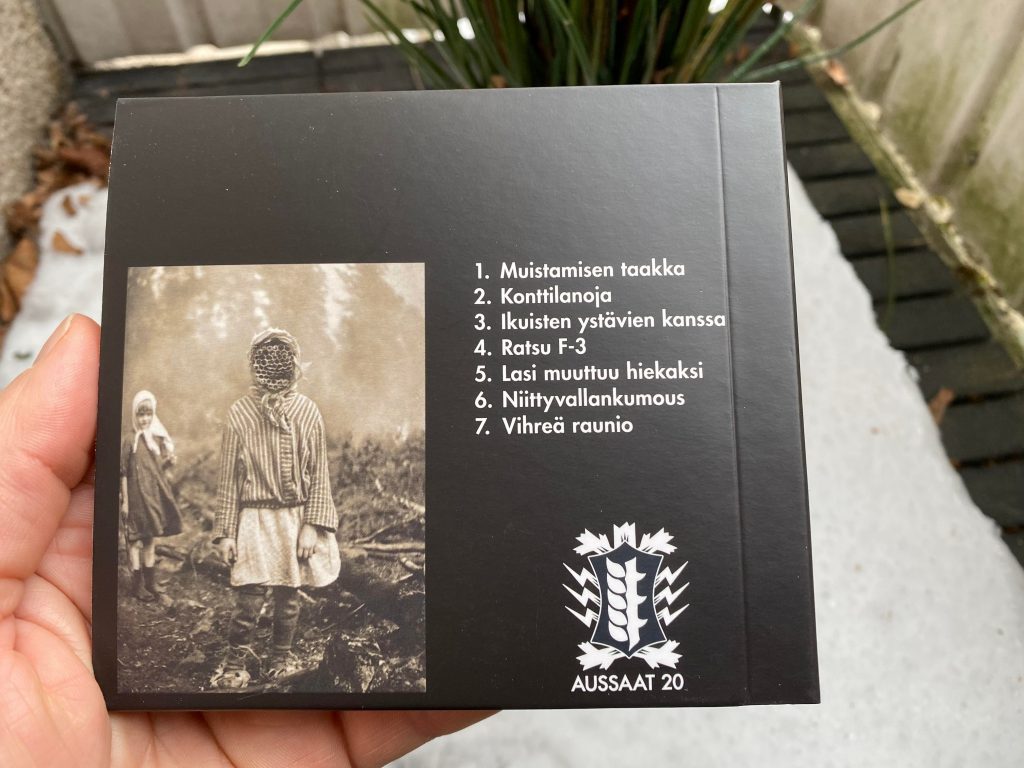
Like The Brotherhood of Ruralists refused to give manifesto, or explain too deeply their works, Nuori Veri leaves plenty of things open. We get feeling, that what he says, is personal. It is real and it has meaning. It is not also expressing intention, but expressing what has been done and experienced already. Highly personal, yet one can perfectly relate to it.
Album is sometimes crossing the line, whether it is experimental industrial noise or… radio-play? There are longer pieces of narration, that are statements with weight. Especially outside Finland, where listener can not understand what is being said, one can take these as artistic expressions. As merely good sound, atmospheric, dark and unusual. There is so much of European experimental sound, where language is something you can’t understand. It is still satisfying to listen, even in form of phonetic delivery.
For Finns, vocals allow deeper experience, when dialogue expands the expression of phonetic sound. Also lyrics take it way further than it is commonly used in ”industrial” / power electronics.
One of Ruralist element that made them infamous, is of course the preoccupation with pre-pubescent girls. This has nothing to do with Nuori Veri, yet experts may find material from power electronics where this side of the ruralist art has been observed. Ovenden has concluded that the fact that this question is so frequently asked, reveals more about age we are living, than anything about them.
When Ovenden describes Ruralist art, it makes me think of ”ruralist noise”. He says: Ruralism, whatever its romantic connotations, is not the soft underbelly of contemporary art. The opposite in fact is the case, Light plays on form, creating shadow and mystery.
This is what we have in Nuori Veri too. In lines such as ”as younger, I was pacifist, but now sometimes things are just too much…” (not exact translation), or describing the drive from city to countryside, to be scheduled in hours when you are unlikely to be stopped (by the police). The cracks of shadow and mystery is always present in work.
While I may be drawn to subversive, transgressive, and so on, I am not always drawn to the obvious. Furthermore, if there is something seemingly obvious, it may be merely disguise that one needs to get over with, to see potential for vastly deeper observation.
Nuori Veri album is very much in lines of ruralist painting, that it’s sounds are figurative. There is barely abstract sounds, per se. Sounds that would be purely abstract or art concrete – just ”themselves”. They are figurative, and therefore have often vastly stronger impact for me.
We are talking both, field recordings that have natural sounds, but also sounds created with physical means or from object you can envision. They carry very direct sense of volume, space, location and form. Even when juxtaposed with something what could not be co-existing in the so called natural world.
While Nuori Veri is not HARSH or pure noise by definition, the noises it offers have such direct connection to something you know, that it has more in common with figurative painting than abstract splatters or theoretical concepts associated with some of experimental sound or pure noise!
It clearly lives in the fractures of urban and contemporary, slightly commenting it, but always with strong yearning for something, which is not nostalgic, conservative or ”old”. Re-direct both experimental noise as well as personal life into something what is meaningful and satisfying. Often illustrating the brief moment of clarity where you almost can see, but can’t quite articulate fully nor possibly give anyone advice or exaplanation. It leaves listener the possibility, and duty, to be inspired and take it further by themselves. Combine art with their own life, visions and experiences.
Materials:
Nuori Veri “Kadonnut Maailmankuva” CD (Aussaat 020, 2021)
The Ruralists (edited by Christopher Martin. Arts & Design 1991)
Further material:
